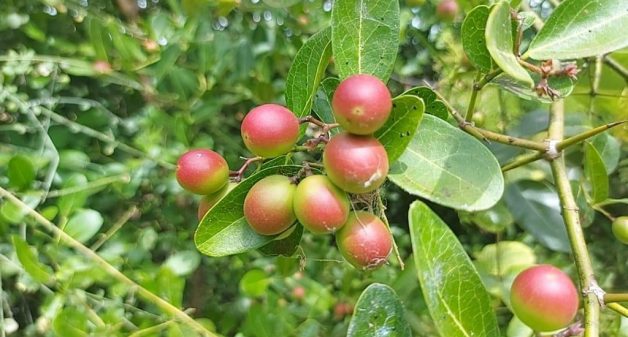
Lawyer-turned-farmer advocates for forest farming
Would you quit your professional job to be an organic farmer for the sake of healthier food? That’s what this Tamil farmer did – converting other farmers to his methods to boot.

Would you quit your professional job to be an organic farmer for the sake of healthier food? That’s what this Tamil farmer did – converting other farmers to his methods to boot.
It’s hard to believe L R Venkatesan’s lush mini-forest – full of guava, cranberry, jujube, birds and butterflies – was once barren land. The 3.5 acre plot was covered in limestone that went one-and-a-half feet deep. Most people did not think it was good for much.
But Venkatesan had an idea. Though he had come from a farming family, he had left home to move to the big city and become a lawyer. But the vocation of his people kept coming into his mind. So did the need for good, healthy food.
He believed that if food was grown on the land without chemicals, the land could become lush again and the food full of nutrition.
The seeds for a shift in Venkatesan’s career were sown when he met some children with spastic cerebral palsy in a Chennai hospital.
“I was trying to establish a legal practice in Chennai. Meeting the children shook me up. I learnt that food grown using chemicals was the main culprit causing physical and cognitive disabilities,” he said.
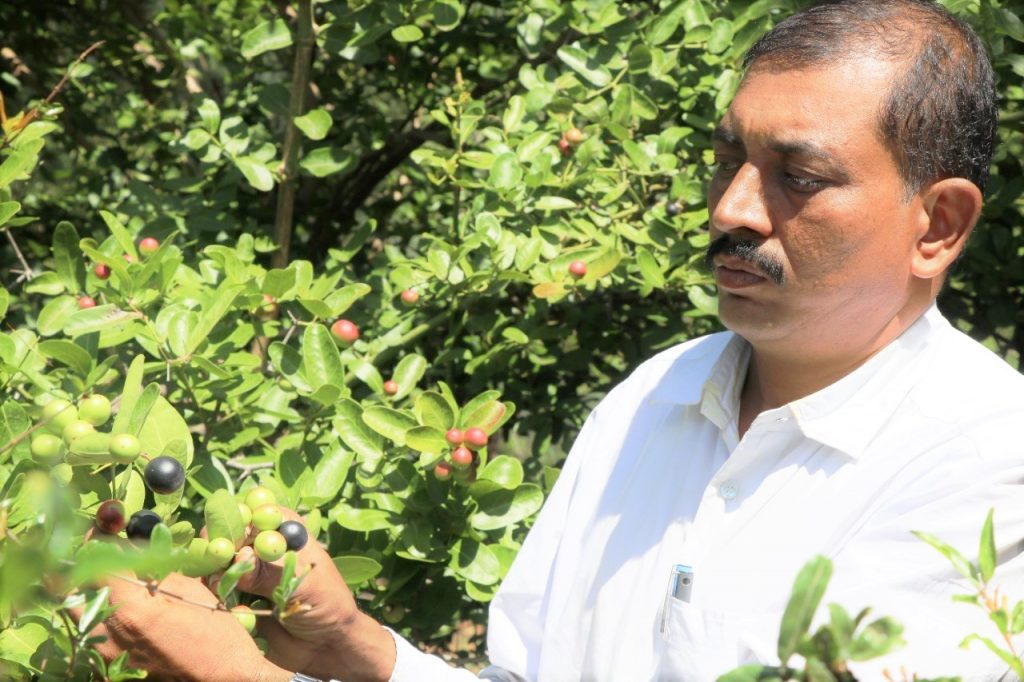
Severn years ago he left Chennai and returned home to Theni district of Tamil Nadu, determined to produce healthy food – naturally and profitably. He took over his grandfather’s land at Ambasamuthiram village, where farmers were struggling to make ends meet.
“Farmers grow coconut trees and short-term crops, like maize. But the rains are irregular. So, now farmers are selling their lands to windmill farm developers,” said Muthaiah Pichaimuthu, an engineer from a neighbouring village.
Venkatesan’s family had also sold part of the family land when his father took up a job in a cotton mill. “The rest remained fallow,” he said.
With no knowledge of farming, except the little he had gained as a young boy helping his grandfather, Venkatesan set to work.
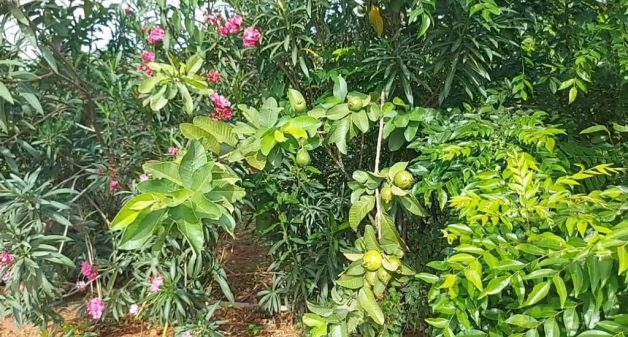
With a firm belief in ancient wisdom, he planted trees in a manner so their different heights would allow balanced sunlight and different rooting patterns would ensure optimal use of the land.
Venkatesan made a natural fence for his farm with thorny plants, like Manila tamarind, cranberry and Indian jujube.
Coconut trees formed the first tier of his organic forest. Then he planted timber trees, like teak, mahogany and some indigenous trees, running almost parallel to the boundary.
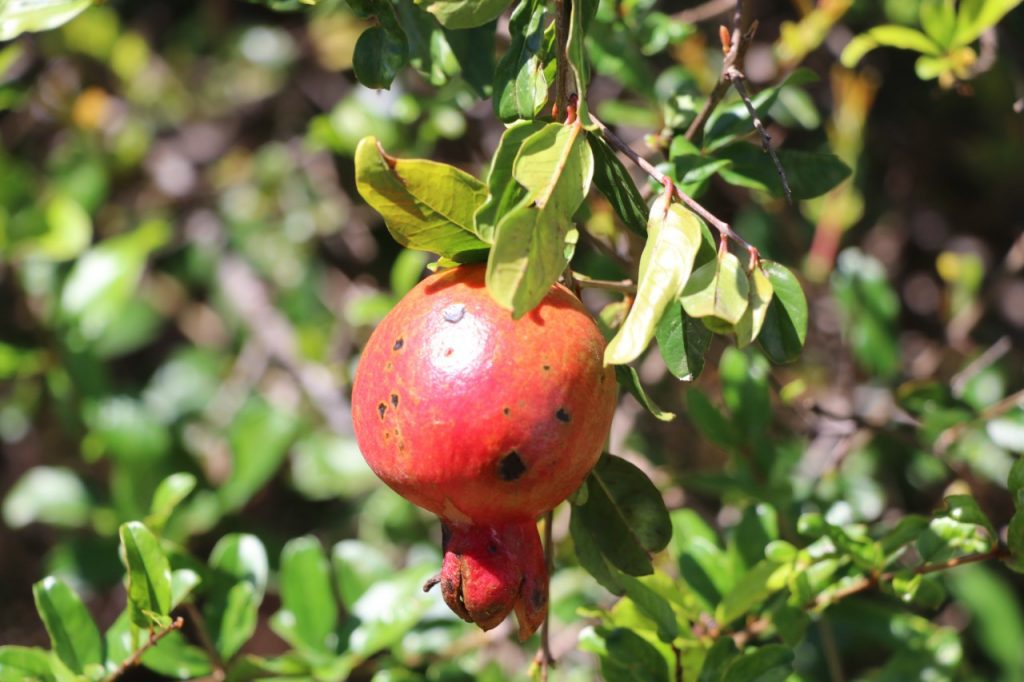
The next tier has bountiful fruit trees, including pomegranate, jamun, custard apple, lemon and amla. On rotation he grows seasonal vegetables, papaya and curry leaves between the trees.
Though Venkatesan’s layered forest is similar to a planting style known as Miyawaki method – in terms of spacing out the canopy, tree, sub-tree and shrub layers for optimum sun and soil usage – he was not aware of it. He was just using his own instincts and trial-and-error learning.
In all, he planted about 2,000 saplings in two acres. Only about 65% survived and took root.
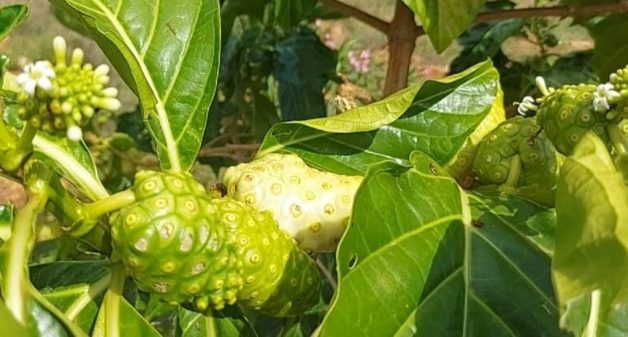
“I endured initial failures and long gestation periods, but kept working,” he said.
Venkatesan has created large rainwater harvesting pits and channels. The run-off from the elevated part of his land reaches the pits via the channels, recharging the groundwater. For judicious use, he follows micro-irrigation once a week.
The animals on his farm are a vital part of the regeneration process. He uses the animal waste from his ten cows and calves as well as a goats and hens, providing rich manure and natural pesticides, all repurposed within the farm.
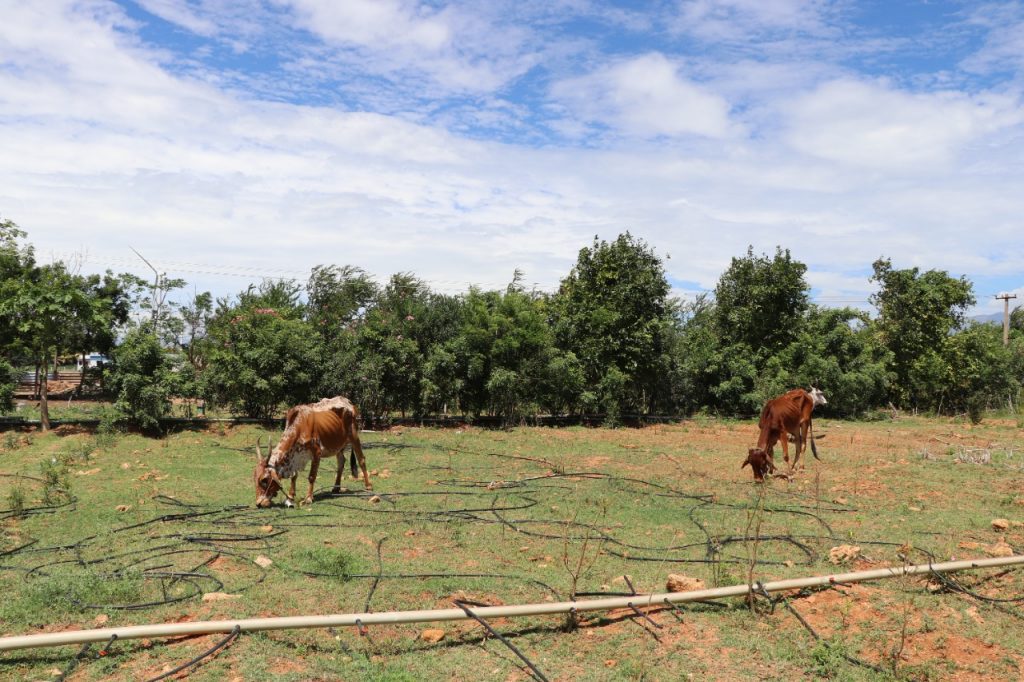
“Without native livestock you can’t do natural farming effectively. Each native cow can supply manure for 10 acres,” said Venkatesan.
Seven years on, his land has become a multi-layered mini-forest. More than that, he started tasting commercial success two years ago.
“Once the trees stabilised, they started giving bountiful yields,” he said.
Much of the ripe fruits are eaten by birds or fall and decay, as he doesn’t employ anyone in the farm, embracing the notion that natural farming uses minimum human intervention.
“Whatever is leftover gives me enough income,” said Venkatesan.
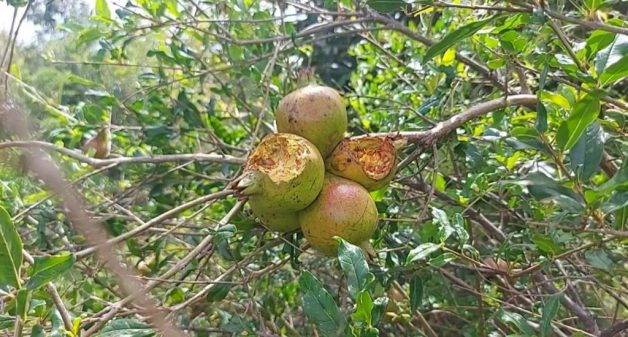
The fruits fetch him an annual income of Rs 4 lakh, since all the inputs are recycled within the farm and there is no running cost. He hopes to triple it in two years.
“Birds disperse seeds and without any effort on my part the place has attracted a rich bio-diversity. Sandalwood and neem trees – not planted by me – grow thanks to the birds,” he said.
The honey bees that he rears in boxes are also part of the circular eco-system. They are vital for the natural pollination of the forest, while their honey sells at Rs 650 per kg, providing additional income.
With rising awareness about healthy eating, people from many nearby towns and districts visit Venkatesan’s farm to buy his naturally grown fruits. Venkatesan sells his produce both at his farm gate and through organic product outlets in Chennai.
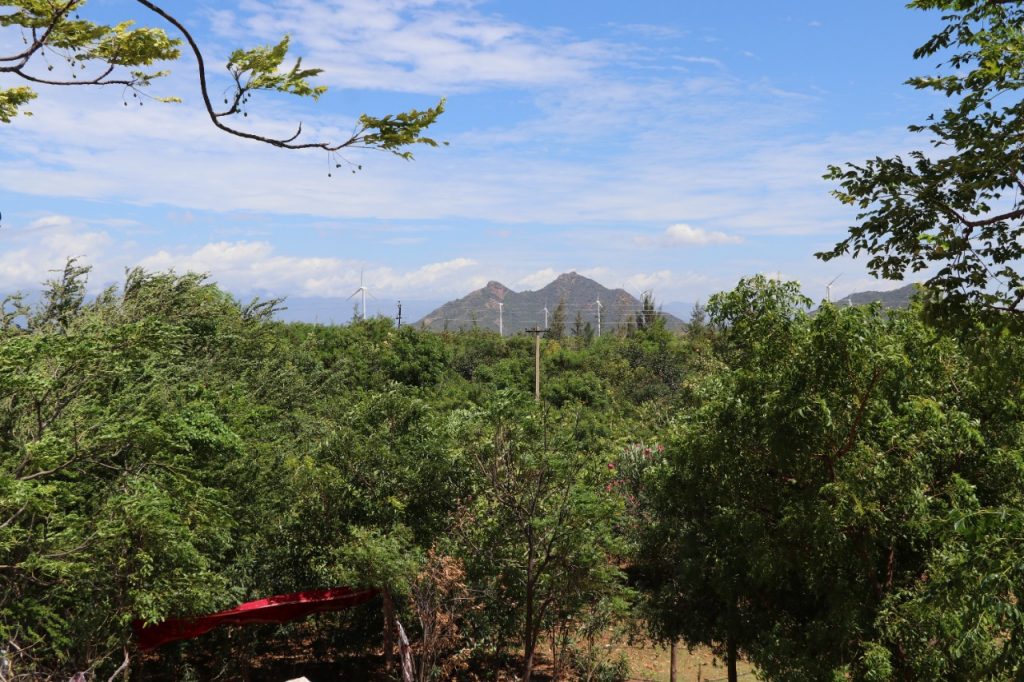
“The pomegranates and jamuns in Venkatesan’s farm have a unique taste, unlike the ones sold in the market,” says K Sadayandi, a wholesale vegetable vendor and regular buyer.
But that is not the only reason people visit Venkatesan. Many budding farmers visit him to learn his natural farming methods. Some like Manikandan Sethupathy, a mechanical engineer from a nearby village, started following his agro-forestry practices.
“He achieves high yields in a challenging terrain,” said Venkatesan.
Other farmers have not only tried Venkatesan’s methods of farming, but have seen the fruits of his labour in their own fields.
“Following his natural techniques in our farm, we have achieved good yields without incurring any cost,” Sethupathy told us.
George Rajasekaran is a journalist based at Salem, Tamil Nadu.